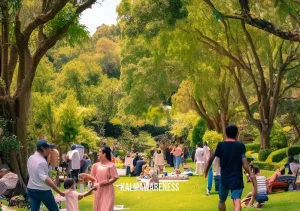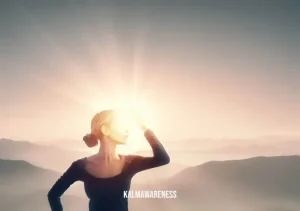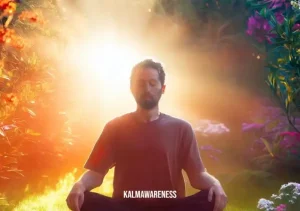Don’t Be Clowning a Clown: The Power of Irony, Playfulness, and Satire in Creative Expression
Irony, playfulness, and satire are powerful tools in the realm of creativity and inspiration. These elements can shine light on the human experience in ways that are both profound and humorous, allowing us to reflect upon our lives and the world around us. The saying “don’t be clowning a clown” encapsulates the essence of recognizing the creative genius behind playful expressions, and appreciating the depth and intelligence that often lies beneath. This article delves into the myriad ways in which we can harness the power of irony and satire, while also embracing a playful spirit, to enhance our creative pursuits and inspire others.
The Nuanced Language of Irony
Irony, at its core, is about contrast. It’s the difference between what is said and what is meant, or the discrepancy between expectation and reality. This can serve as a powerful tool in storytelling, allowing creators to make profound statements without overtly stating them. Irony also has the ability to make us question our own perceptions and beliefs. By highlighting the inconsistencies in our own logic or the world around us, irony can be a vehicle for deep reflection.
Consider for a moment the playful practices found in teddy bear yoga. While on the surface it may seem like a lighthearted activity, it is deeply rooted in the idea of embracing childlike wonder and joy. This playfulness contrasts with the often serious world of adult responsibilities, showcasing the irony of how we sometimes forget the simple joys of life.
Embracing Playfulness
In a world where there’s a constant push for productivity and seriousness, allowing oneself to indulge in playful activities like goofing around or simply goofing off can be seen as a rebellious act. Playfulness is often dismissed as frivolous, but it’s an essential aspect of human nature that fosters creativity and happiness.
Playful activities like the breath of joy or teddy bear breathing serve as reminders that it’s not only okay but beneficial to let go of our inhibitions and embrace our inner child. In fact, there’s a great deal of wisdom kids can share about healing and happiness. Embracing playfulness can lead to a richer, more fulfilling life, where we’re in tune with our inner selves and the world around us.
Satire as a Mirror to Society
Satire holds up a mirror to society, showing us our flaws, contradictions, and hypocrisies. It’s a tool that has been used throughout history to challenge the status quo and provoke thought. When done effectively, satire can make us laugh while also making us think, pondering deeper issues and societal norms.
For instance, the idea that “it’s okay to let your goofy side shine through” is a satirical nod to society’s often rigid expectations. By highlighting the absurdity of certain societal norms, satire encourages us to question and challenge them.
Conclusion: The Creative Alchemy of Irony, Playfulness, and Satire
Irony, playfulness, and satire are more than just literary devices or comedic tools. They are pathways to deeper understanding, avenues for self-expression, and catalysts for change. The essence of “don’t be clowning a clown” is to recognize and appreciate the depth behind seemingly playful or ironic expressions. It’s an invitation to delve deeper, to question, and to embrace a more playful and reflective approach to life.
As we move forward, we’ll dive deeper into the importance of mindfulness in humor, the therapeutic power of practices like balloon meditation, and the ways in which embracing our inner child can lead to profound healing. So, continue reading and join us in this exploration of creativity, inspiration, and the myriad ways we can enrich our lives through irony, playfulness, and satire.
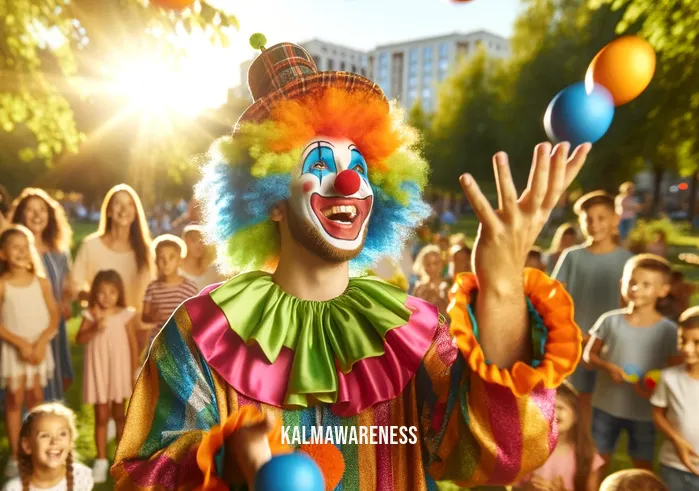
Unmasking the Deeper Meaning: Why “Don’t Be Clowning a Clown” Is More Than Just a Phrase
The phrase “don’t be clowning a clown” is not merely a playful saying; it holds deeper layers of understanding and introspection. In our exploration of its significance, we come to realize that beneath the playful exterior of jesters and clowns lies a profound understanding of human nature and societal constructs. Let’s peel back the layers and delve into the essence of this phrase.
A Brief History of Clowns and Their Role in Society
Before understanding the phrase, it’s vital to comprehend the history of clowns. Throughout time, jesters and clowns have played crucial roles in various cultures:
- Ancient Rome: Clowns, known as ‘scurra’ in Latin, were jesters or comedians who would perform and entertain audiences.
- Renaissance Europe: Court jesters held a unique position in royal courts, cleverly commenting on political and social issues while amusing royals.
- Modern Day: From circus clowns to satirical comedians, they use humor to shine a light on societal truths.
By tracing back to the roots, we can see that clowns have always been more than mere entertainers. They have been social commentators, revealing truths about society, often cloaked in humor. Recognizing this history helps us grasp the depth behind mindfulness humor and why it’s essential not to overlook or ridicule such expressions.
Why You Shouldn’t Be “Clowning” a Clown: Three Essential Takeaways
- Understanding Beyond the Surface: Like the iceberg analogy, what we see of a clown (or their humor) is only the tip. Beneath the surface lies a depth of understanding, societal observations, and wisdom.
- Respect for Art and Expression: Dismissing or mocking a clown or satirist is disrespecting their art. Every jest, joke, or performance has intent and meaning behind it. As lottahumor suggests, it’s essential to see the bigger picture and appreciate it.
- A Reminder to Laugh: Life can be overwhelming and heavy. Clowns remind us of the importance of laughter, joy, and the need to sometimes take a step back and not take everything so seriously. Activities like balloon meditation and breathing ball toys stem from the same principle of finding joy in simplicity.
Table: The Depth Behind “Don’t Be Clowning a Clown”
| Aspect | Surface Perception | Deeper Meaning |
|---|---|---|
| Appearance | Colorful costumes, exaggerated makeup | A representation of breaking societal norms, standing out, and embracing individuality |
| Humor | Light-hearted jokes, slapstick comedy | A reflection of societal contradictions, a commentary on human nature |
| Role | Entertainer | Social commentator, truth revealer, mirror to society |
| Interaction | Amusement, audience laughter | Engaging the audience, making them reflect, challenging their beliefs |
| Legacy | A fun character in shows, movies | A continuous thread of truth-tellers throughout history, changing forms but holding the essence |
It’s clear from the above that clowns and jesters hold a significant place not just in entertainment but in the broader tapestry of human history and culture. Their role as mirrors to society, using humor as their medium, cannot be underestimated.
In Conclusion: Peeling Off the Makeup
The phrase “don’t be clowning a clown” serves as a reminder to appreciate the depth behind playful expressions and to recognize the brilliance that often lies beneath the surface. It’s an invitation to be more observant, more respectful, and more appreciative of the nuances in the world around us.
In the next segment, we’ll explore further how embracing our playful side and understanding the subtleties behind humor can lead to personal growth and societal change. Join us as we continue this enlightening journey.
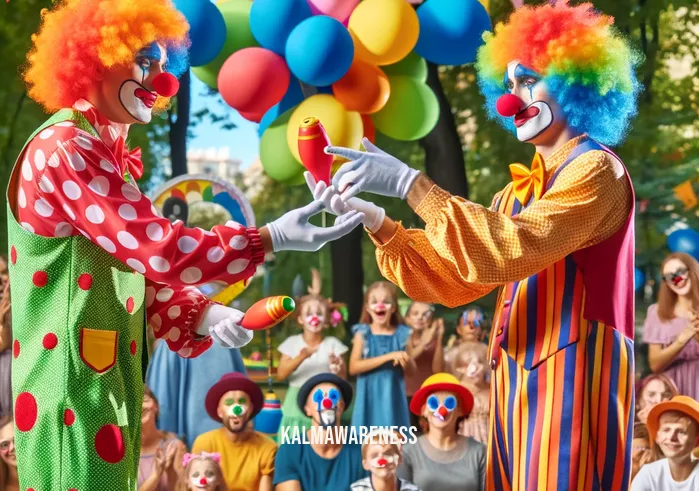
The Inspirational Threads Beneath the Jester’s Hat: Hope in “Don’t Be Clowning a Clown”
Clowns and jesters, throughout history, have held a mirror to society, often providing commentary on significant issues while making us laugh. But another layer to their purpose has been the inspiration they’ve provided. By emphasizing the relevance of “don’t be clowning a clown,” we can uncover tales of hope, resilience, and inspiration.
The Power of a Laugh
One might wonder, how does the playful demeanor of a clown inspire? To answer this, consider the myriad times a clown or a comedian has brought attention to a serious societal issue through satire. Their ability to weave humor with insightful commentary acts as a beacon of hope, telling us that even in the darkest moments, there’s room for a smile.
A quote by the renowned Charlie Chaplin aptly puts this into perspective:
“Laughter is the tonic, the relief, the surcease for pain.”
This sentiment is echoed in modern times through various platforms that use humor to discuss challenging topics. For example, goofing around means not avoiding problems, but facing them with a light heart and finding solutions in the most unexpected places.
Tales of Inspiration: When Clowns Made a Difference
Patch Adams: The real-life story of a doctor who believed in treating the spirit as much as the body. He would often dress as a clown and make his patients laugh, proving that laughter could be just as therapeutic as medicine.
Clowning in War Zones: There are several groups of clowns that visit war-torn areas to bring smiles to children’s faces. In such places, a moment of laughter becomes a beacon of hope.
By understanding the essence behind actions like teddy bear yoga or the comforting concept of teddy bear breathing, we see the importance of laughter and play in healing.
The Profound Insights Hidden in Jest
A clown’s words may be wrapped in humor, but their underlying message is often profound. Consider these words:
“To truly laugh, you must be able to take your pain and play with it.” – Charlie Chaplin
This sentiment underscores the idea that in humor, there’s strength. Or, as my inner child is screaming suggests, sometimes we need to embrace our playful side to heal and move forward. Another quote that aligns with this is:
“The human race has only one effective weapon, and that’s laughter.” – Mark Twain
And in a more contemporary context, consider:
“Comedy is defiance. It’s a snort of contempt in the face of fear and anxiety. And it’s the laughter that allows hope to creep back on the inhale.” – Will Durst
Concluding Thoughts: The Dance of Laughter and Hope
If history and the tales of jesters teach us anything, it’s that humor is a potent tool against adversity. “Don’t be clowning a clown” isn’t merely a saying; it’s a call to respect and recognize the profound wisdom behind humor, jest, and play. By doing so, we open ourselves to a world of inspiration, hope, and resilience.
In our next segment, we will delve into the transformative power of humor, looking at how it can catalyze personal growth and societal evolution. The journey of understanding continues, and you’re invited to be a part of this enlightening expedition.
@
The Anatomy of Jest: Delving into “Don’t Be Clowning a Clown”
Clowning, beyond the vibrant colors and exaggerated expressions, serves as a tapestry rich in history, emotion, and insight. But what truly lies behind the ethos of “don’t be clowning a clown”? Let’s take a moment to break down the essence of this concept, uncovering the nuances that make it so impactful.
The Components of Clowning
To appreciate the depth of our core sentiment, it’s essential to understand the layers within the art of clowning:
History: Clowns have ancient origins, tracing back to jesters in royal courts. Their primary role was to entertain, but often, their performances were riddled with veiled criticisms of the establishment.
Satire: This is the weapon of the clown. Using humor, they address societal issues, making people think while they laugh.
Vulnerability: Beneath the makeup, there’s a rawness in every clown act. A good clown lets the audience see their vulnerable side, allowing a connection to be formed.
Transcendence: Breath of joy or the liberating feeling of balloon meditation reflects the transcendence clowns bring. They transport audiences to a place of mirth, away from their everyday troubles.
Why “Don’t Be Clowning a Clown” Matters
Here’s a succinct breakdown of why this sentiment holds weight:
Recognition of Depth: Dismissing a clown’s act as mere tomfoolery overlooks the layers of emotion, satire, and skill involved.
Honoring Creativity: Goofing off doesn’t mean being frivolous. It’s a genuine form of expression, deserving of respect.
Acknowledging Healing: Breathing ball toy techniques or the simplicity of mindfulness humor are testaments to the therapeutic power of laughter.
Valuing Vulnerability: Just as we’re told it’s okay to let your goofy side shine through, valuing a clown means recognizing the courage it takes to be emotionally open in front of an audience.
Cultural Impacts Across the Globe
Different cultures perceive clowning differently, but the universal thread remains the same – they’re storytellers. Here are some global takes:
- Europe: Harlequins and jesters, offering both comedic and sometimes tragic performances.
- Asia: Masks and dramatic performances intertwining dance, humor, and fables.
- Africa: Storytellers using satire to impart lessons or share histories.
- Americas: A blend of native storytelling with modern theatrical influences, leading to diverse performances.
A Forward Look
As we’ve dissected the world of clowning, it becomes evident that it’s not just about slapstick comedy or balloon animals. The sentiment “don’t be clowning a clown” goes much deeper, appealing for respect, understanding, and appreciation of an art form that has stood the test of time.
As we approach our concluding chapter, prepare for a panoramic view, piecing together the insights we’ve gained. Together, we’ll see how this seemingly simple phrase can be a guiding light in understanding human connection, expression, and healing.
@
Unmasking the Jest: Reflecting on “Don’t Be Clowning a Clown”
As we reach the climax of our exploration, it’s essential to pause, reflect, and truly grasp the profundity of “don’t be clowning a clown”. This phrase, while whimsical at face value, reveals a universe teeming with layers of meaning, history, and genuine human connection.
A Journey Through Layers
In our quest, we’ve traveled through:
- The Origins and Evolution of clowning, appreciating the ancient roots and contemporary influences.
- The Depth and Significance behind each jest, chuckle, and exaggerated expression.
- The Cultural Perspectives offering diverse lenses through which the world perceives this art.
- And the Nuances that have shaped our understanding of why we shouldn’t underestimate or mock a clown.
These reflections align with our exploration into the essence of my inner child screaming, emphasizing the raw, untamed emotions and the healing power they bring.
The Power of Playfulness
As we’ve seen, playfulness isn’t just about frivolity. It’s about goofing around, sure, but it’s also about being genuine, open, and connecting with others. So, when we say “don’t be clowning a clown”, we’re essentially urging respect for the art of genuine, heartfelt expression.
Wrapping Up With Gratitude
Thank you, dear readers, for joining us on this enlightening journey. Your engagement fuels our passion for delivering rich, insightful content. We hope that as you navigate the world, you’ll carry the essence of our discussions, recognizing the depth behind every jest and the soul behind every mask. If ever in doubt or seeking more insights, remember, our treasure trove of articles, including the rejuvenating teddy bear breathing, await your exploration.
Looking Ahead
There’s a vast universe of knowledge and insight out there, and we’re just scratching the surface. As you close this chapter, let the essence of “don’t be clowning a clown” resonate, but also stay curious. Dive deeper, explore further, and let every chuckle, giggle, and guffaw be a bridge to understanding a little more about the world around us.
Before signing off, we encourage you to revisit our past segments for a refresher or share them with friends and family. After all, enlightenment grows when shared. And as always, stay tuned for more captivating content in our upcoming editions. Until then, remember to see beyond the face paint, and cherish the heart that beats beneath.

